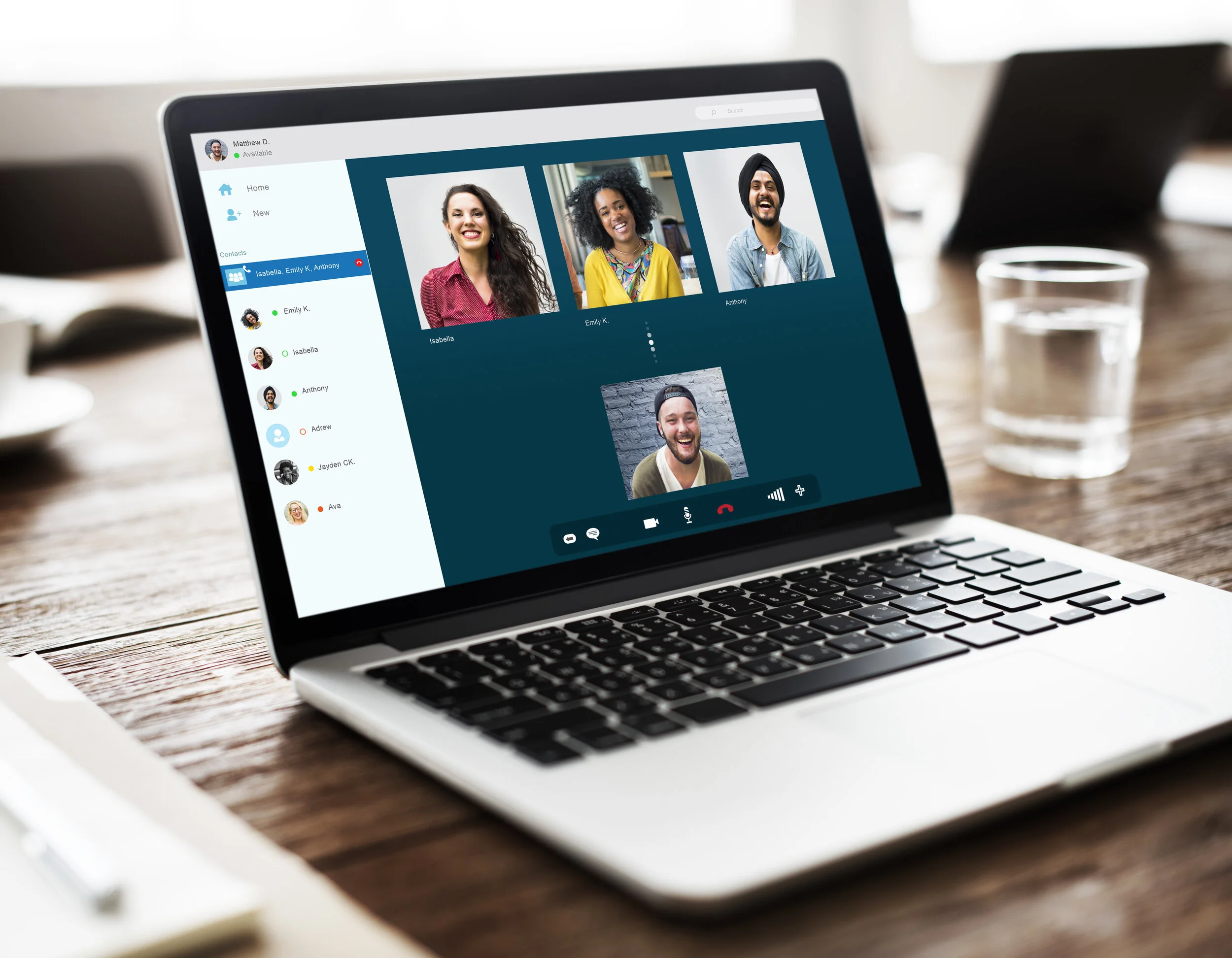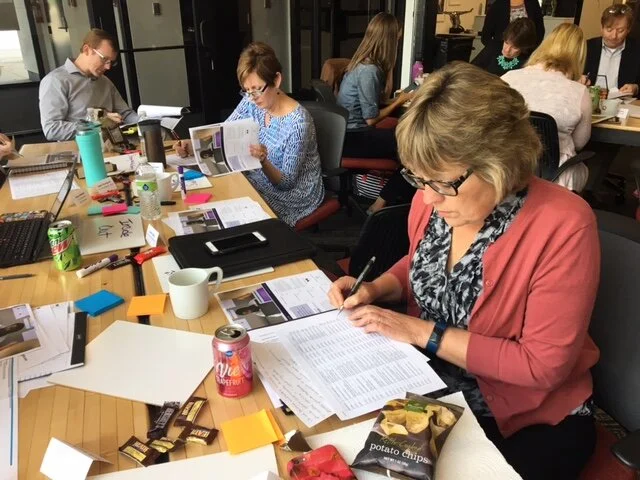I am the person in your meeting that likes to sit back, take it all in, and find a moment to drop a truth bomb that hopefully creates positive momentum towards our goals. I know that about myself because in my head it is pretty calculated. I read the room in the meeting, understand how much influence I think I can have based on many factors (position of leadership, tenure, expertise), and then calculate when will be the best moment to use my influence. BOOM!
Read MoreIn the world of philanthropy we have a lot of rules. Rules that often work against equity and inclusion in the funding process.
Stuff like:
You can't be an individual and apply.
You must have 501(c)3 status to apply.
You can't use a fiscal agent to apply.
One of the secrets to a great meeting is creating a vivid and resonant shared understanding of both the meeting purpose and intended outcomes. In my work I have found that using metaphors to describe and facilitate meetings can break through the daily noise and distractions. Once people have responded to a vivid image it is harder to forget or get distracted from the purpose at hand.
Read MoreLately, we’ve been facilitating a lot of high stakes meetings; choosing strategies for the future, discontinuing activities that aren’t working, analyzing systems that harm rather than help.
We’ve also been facilitating a lot of lower stakes meetings with people experiencing high stress; learning meetings where people are distracted, brainstorming meetings where people don’t feel energized, and relational meetings where people are Zoomed out.
No matter the setting, the stakes or the people, one little word - NOT - helps our clients accelerate progress towards their goals and build trust with their teams.
Read MoreLike many students, going back to school virtually was not how I imagined my last year as an undergrad. Online school has been difficult and brings challenges for different types of learners. See What I Mean believes that we learn by doing, not passively listening -- which is not as easy in a virtual setting.
Read MoreI was once given a task to research what it would take to make my large organization, with many departments working in silos, work more cross functionally. I can sense your eye roll and sigh of exhaustion.
What I realized in the mountains of articles and research about cross-functionality is that it takes a lot of time, a lot of resources, and hardest of all, a complete shift in organizational mindsets. Cross functionality requires a mission-focused mindset rather than a departmental goals focused mindset. A hard shift to make when pay raises and bonuses are built on departmental goals.
Read MoreWhile individuals in their personal lives and politics may be able to afford hyper levels of political divisions it is more difficult, expensive, and counter-productive when over politicization begins to thrive in our workplaces, networks and communities. . While hyper politics can have its place for an organization if and when it is threatened by political action or is in danger of being a political pawn, it is a dangerous game.When an environment--real space or social media--becomes overly politicized and when everything is judged in political or polarized terms, cooperation toward common goals becomes nearly impossible.
Read MoreWe’re guessing your calendar is jam packed. Meetings, even in good times, can feel like a nuisance. Meetings, during disrupted times, can feel like a terrible burden. Every meeting comes with more decisions, and adds to the decision-fatigue many leaders are feeling. To sort choices and make decisions, we encourage you to draw a line (like the one below) and use four simple steps to make decision making meetings more productive.
Read MoreLast week, Jenna wrote about decision-fatigue. Decision-fatigue is the “ugh” feeling we’re experiencing while navigating an avalanche of choices. Choosing a return-to-learn plan for my teenagers has been a source of decision-fatigue for my family. Online? Face to face? Hybrid? Virtual Academy? We’re still weighing options and seeking advice. I can’t wait for the “ugh” feeling to be swept away by the “whew” exhale of a choice made!
Read MoreDuring this time of uncertainty these questions can be overwhelming. It becomes easy to reach decision-making-fatigue when we are making choices about the questions, actions, and problems to tackle daily. Yet, there are still decisions to be made and tasks to be completed. Through my recent projects with See What I Mean, I have learned new ways to adapt and cope with decision-fatigue.
Read MoreAt See What I Mean, we are always committed to learning, and we are being intentional about learning how we have benefited from a society based on the premise that white is the norm or standard. We are looking for ways to learn from BIPOC leaders in our community, while also respecting the space they need to grieve and take care of themselves. We have been reading and listening to experts on the topics of racism and anti-racism and want to share some of those resources below.
Read MoreWhen we think about addressing diversity, equity and inclusion (DEI) in our organizations, we tend to jump to the tactical response of training. Training, such as unconscious bias training, is extremely important. However, if we stop there, we might not make lasting or holistic change. Consider, what happens, when we move DEI to the center of the conversation and consider in what ways we need to strengthen, adjust and change all of the ways we work from staffing to planning to partnerships and systems.
When thinking about addressing challenges at the center of our work, See What I Mean often uses a tool called Success Circle.
Read MoreOver the last five years, we’ve seen experts implore organizations to stop strategic planning. The rationale goes… “the world is too unpredictable for long term planning.” Hello 2020! If there was ever a moment to call unpredictable, it’s this one! We’ve never boarded the “stop planning” bandwagon, and we are not going to start now.
Why keep planning?
Read MoreAt See What I Mean, we believe that prototyping plays an integral role in how we think about moving forward with any strategy. However, we also find that the skill of prototyping is one we have to do over and over again in order to engrain it into our standard practices.
Read MorePlan, Act, and Communicate on Multiple Timelines!
Two of the greatest surprises about Thriving in Disruption are:
The need to think and act in at least 3 visions and timelines at once AND
The non-negotiable necessity to prioritize communications that build trust with constituents including donors/partners.
When our current strategies run into disruption we must make choices.
Even during disruption, we have the opportunity to act with intention. Use this model to consider the long-term effects, opportunities and side effects of today’s choices.
Read MoreI was recently in a Zoom meeting and a participant said, “ I don’t know about you all, but when I am in these meetings it is hard for me to believe it is actually real.”
They were talking about the lack of human interaction, but I often have the same thought about virtual meetings when it feels like anything I say just disappears into the ether. I don’t see anyone writing it down, putting it on a
Read MoreToday, many of us are scrambling to find virtual tools for meetings, classes, or to simply stay connected. In response, we've accelerated experimentation with new virtual tools and had to become more systematic to gain confidence to use them with clients.
Read MoreA recent Slate article proposed that the changes we are making to fight COVID-19 will likely mean that we will NOT go back to the “way life was before.” (We’re Not Going Back to the Way Life Was Before, March 12, 2020, Henry Grabar))
In one week in the United States we have accomplished the nearly universal acceptance of social distancing as an effective way to “flatten the curve” and slow down the spread of the virus.
Read MoreLast week, in the midst of making cascading decisions to keep people safe, a client encouraged us to help them find ways to continue planning for the future. Even when their daily work had become exclusively focused on TODAY’S work they were committed to the LONG TERM. It was an important lesson for See What I Mean about leadership, planning and disruption.
Read More



















